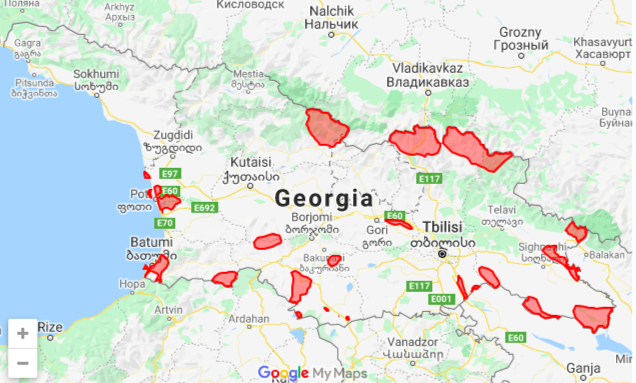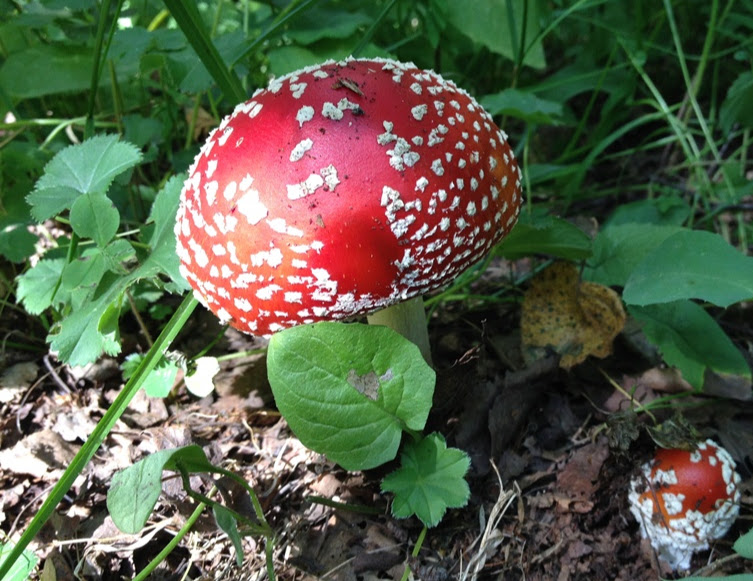Browse by taxonomy
Simple search by name
Lyrurus mlokosiewiczi
Taxon: Lyrurus mlokosiewicziAuthor: Zura Javakhishvili
Comment: Meskheti Mountains
Name According To: http://datazone.birdlife.org/species/taxonomy
Species: mlokosiewiczi
Taxon Rank: Species
Scientific Name Authorship: (Taczanowski, 1875)
Vernacular Name: Caucasian Grouse
Georgian Name: როჭო
GBD Remarks:
An endemic species, whose ancestros have been separated from the ancestors of the European Black Grouse since early Pleistocene (Luccini et al., 2001). Currently separated into two larger geographic populations, one from the Greater and another from the Lesser Caucasus, with remarkable genetic differences between them (Murtskhvaladze et al., submitted).
Conservation Status (International): IUCN status (international) NT, ver 3.1 Pop. trend: decreasing.
Conservation Status (national): Georgian Red List. IUCN National status (2006) VU B2b(iv)
Economic importance (national): interesting as an attraction for bird-watchers, eco-tourists and scientists. Commonly mentioned in Georgian folklore.
Methodological approaches: Habitat suitability modeling, conventional radio-telemetry, aerial surveys.
Research activities: ISU, Institute of Ecology, Institute of Zoology. contact – Zura Javakhishvili. Currently, no ongoing projects. Last year aerial and land surveys, conducted by the Institute of Ecology of ILIAUNI, were funded by the government.
Relevant website: http://www.birdlife.org/datazone/speciesfactsheet.php?id=294;
Relevant information: the global population of this endemic bird is believedto be about 68 000-84 300 individuals, including 40,000-50,000 in Georgia (BirdLife International 2007, 2008) and area of occupancy less than 12,000 km.sq. However, transect counts/ extrapolation (გურიელიძე, ჯავახიშვილი, 2012) suggest the national population counts less than 10000 adults (95% upper confidence limit), with average estimate ca. 4,000 individuals. Limited to the upper timberline, important variables explaining suitability of habitat are presence of both forest and upland grassland and not much human disturbance (Gavashelishvili et al. 2010).
Why to monitor: Globally decreasing and nationally vulnerable. Good indicator of quality of subalpine habitats.
Preliminary suggestion: Organize existing data into a user-friendly format freely available on the Internet. Organize annual monitoring of lekking sites at several pre-defined sites in the Greater and Lesser Caucasus mountains. Monitoring requires two months per year, an expert and 3-4 students.
კონსერვაციული სტატუსი (საერთაშორისო): IUCN სტატუსი (საერთაშორისო) NT ver 3.1. პოპულაციური ტრენდი: კლებადი.
კონსერვაციული სტატუსი (ეროვნული): საქართველოს წითელი ნუსხა. IUCN ეროვნული სტატუსი (2006) VU B2b(iv). საქართველოში ამ ფრინველის არეალის 20%-ზე მეტი მდებარეობს.
ეკონომიკური მნიშვნელობა (ეროვნული): საინტერესოა ბირდვოჩინგისთვის, ეკოტურიზმისთვის და მეცნიერებისთვის. ფოლკლორში უკავია მნიშვნელოვანი ადგილი.
მონიტორინგის მეთოდები: ჰაბიტატების მოდელირება, რადიოტელემეტრის, აერო აღრიცხვები.
კვლევები: ილიას სახელმწიფო უნივერსიტეტის ეკოლოგიის ინსტიტუტი, ზოოლოგიის ინსტიტუტი. საკონტაქტო პირი - ზურაბ ჯავახიშვილი. 2012 წელს სახელმწიფოს დახმარებით აღრიცხვები ჩაატარეს ილიას სახელმწიფო უნივერსიტეტის ეკოლოგიის ინსტიტუტის თანამშრომლებმა.
ვებსაიტი: http://www.birdlife.org/datazone/speciesfactsheet.php?id=294;
რელევანტური ინფორმაცია: გლობალური პოპულაცია, როგორც ითვლება, 68 000-84 300 ინდივიდის ფარგლებში მერყეობს, მათ შორის 40,000-50,000 საქართველოში (BirdLife International 2007, 2008) და დაკავებული ფართი 12,000 კმ. კვ-ზე ნაკლებს ფარავს. შემზღუდველი ფაქტორია ვარგისიანი ჰაბიტატების ნაკლებობა. თუმცა, ტრანსექტული თვლების ექსტრაპოლაციის შედეგად არსებული შეფასება (გურიელიძე, ჯავახიშვილი, 2012) 10000 ინდივიდზე ნაკლებ ციფრს გვაძლევს (95% ზედა სარწმუნო ინტერვალი, საშუალო შეფასება 4000 ინდივიდი). ჰაბიტატი უნდა მოიცავდეს ტყის ზედა სარტყელს და ამავდროულად სუბალპურ მდელოს, და ადამიანის მიერ შეწუხება არ უნდა იყოს მნიშვნელოვანი (Gavashelishvili et al. 2010).
მონიტორინგის საჭიროება: გლობალურად მოწყვლადი სახეობა. სუბალპური ეკოსისტემების მდგომარეობის ინდიკატორი სახეობა.
რეკომენდაცია: არსებული ინფორმაცია სახეობის შესახებ მისაწვდომი უნდა გახდეს ინტერნეტის მეშვეობით. წინასწარ შერჩეული სატიხტიხოების ყოველწლიური მონიტორინგი დიდსა და მცირე კავკასიონზე. მონიტორინგი შეიძლება ჩაატაროს 3 სტუდენტმა და ერთმა ექსპერტმა ორი თვის განმავლობაში.
Page Authors: Zura Javakhishvili ,
Reference of occurrence in Georgia:
Conservation Status
This section is under construction
National Red List Status of have not been evaluated

